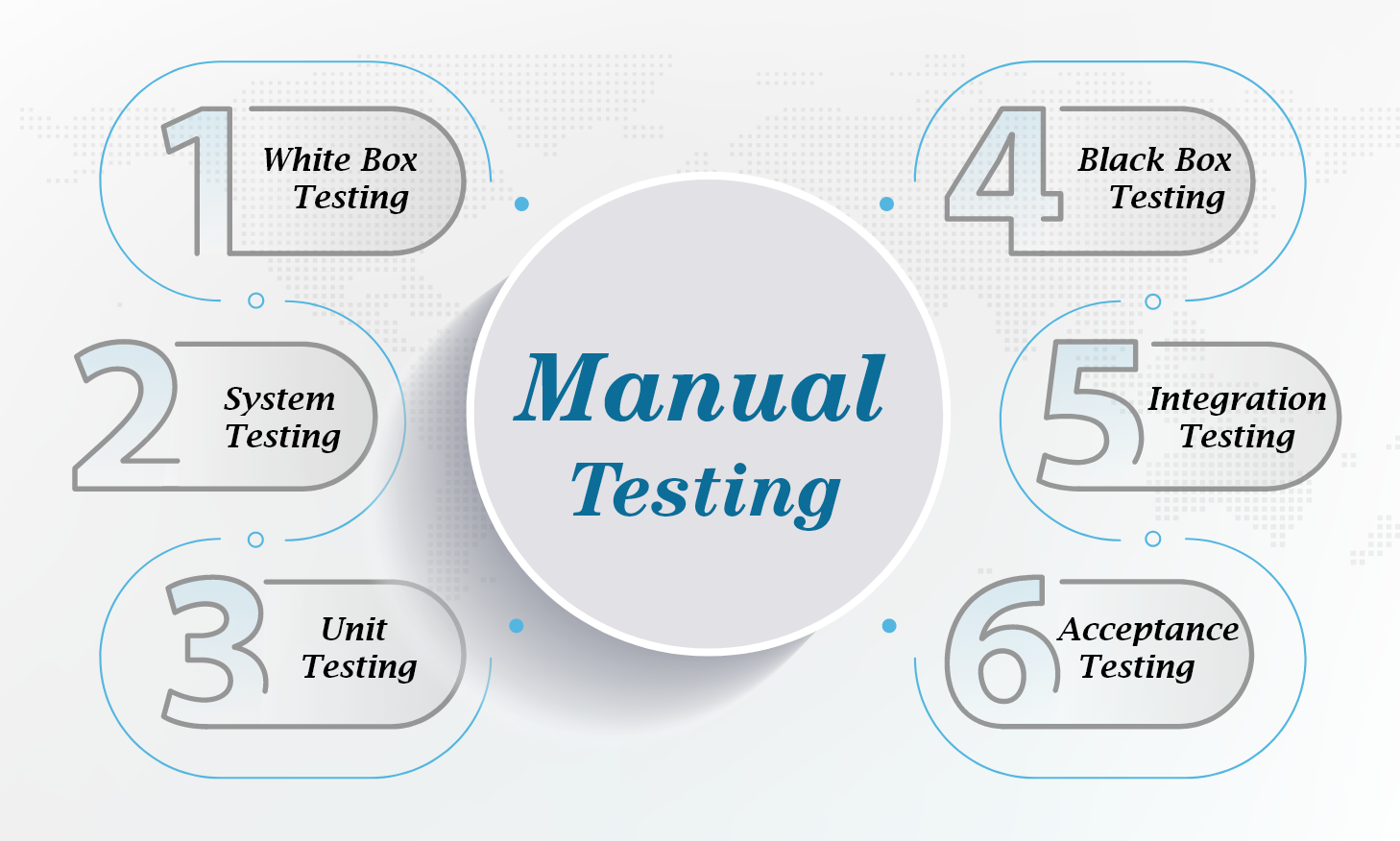
Manual Testing
Manual Testing is the process in which a quality analyst manually tests a software application in order to identify bugs. Quality Analyst is generally required to analyse the performance of website and mobile applications from end user's point of view. Quality analyst verifies the actual behaviour of software against expected behaviour and if there's any difference that's called bug.
Example: A developer has created a website and wants to test it for functionality. Here expected behaviour is that user must be able to enter username and password and submit the credentials by clicking on login button. Suppose the login button doesn’t redirect to home page. In such a case It is called bug. Quality Analyst (QA) will report this bug to the developer.
Stages of Manual Testing
- Unit Testing: It is often used by developers to discover bugs in the early stages of the development cycle. It involves verification of individual components or units of source code.
- Integration Testing: It comes after unit testing. This approach helps Quality Analyst (QA) evaluate how several components of the application work together to provide the desired result. It is a systematic technique for verifying the software structure and sequence of execution while conducting tests to uncover errors associated with interfacing.
- System Testing: It is defined as testing of a complete and fully integrated software product.it verifies that an application performs tasks as designed.
- Acceptance Testing: It is done to verify whether the system as a whole is fit for use in the real world. It is performed both internally and externally .Alpha and Beta Testing are two types of Acceptance Testing.
For example: It is generally like clicking a button on a web page and verifying whether it performs the desired operation.i.e ensuring that a share button on a webpage lets you share the correct page link or go to the correct destination.
Alpha testing is done by the members within the organization.
Beta Testing is done by a limited number of actual end users.
This approach helps the team to evaluate how well the product satisfies the user’s standards. It also identifies bugs at last stage before Product Releasing.
Here’s How to Perform Manual Testing Step by Step:
Manual testing is used to find bugs, faults and flaws in a software product. Some of the Manual Testing tools are Bugzilla , JIRA, JMETER etc.

 Comments (5)
Comments (5)









